Gluten-Free Croissants
Updated
If you’ve missed enjoying this quintessential French pastry as much as I have since going gluten-free, then you’re in luck! These gluten-free croissants are buttery, flaky, and light! They turn out a beautiful golden brown on the outside, yet are fluffy and flaky in the center. Every time I eat them, I’m transported to my favorite French bakery. I like to enjoy a batch for breakfast or with a cup of coffee in the afternoon as a snack.
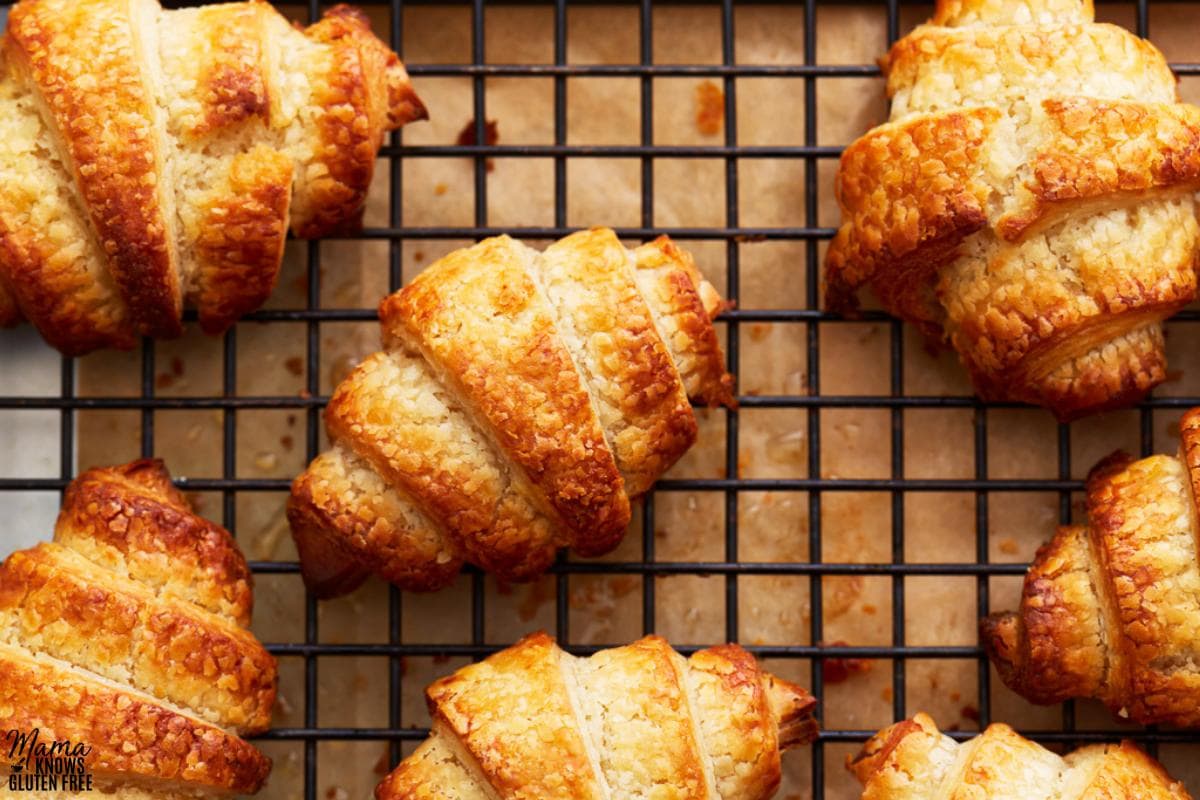
Gluten-Free Croissants Recipe
Making gluten-free croissants from scratch is easier than you think! While it requires time for the dough to chill, the ingredients and prep process are quite simple. Making these delicate gluten-free pastries at home may seem daunting, but with a bit of patience and the right technique, you can enjoy the satisfaction of creating your own homemade croissants.
Ingredients
- Unsalted Butter: Chilled butter is key to getting flaky layers. For a dairy-free option, use Smart Balance butter.
- Gluten-Free All-Purpose Flour with Xanthan Gum: It’s important to use a gluten-free all-purpose flour with xanthan gum that is recommended for yeast baking. We recommend Better Batter or Pillsbury Gluten-Free Flour for yeast baking. Not all brands of gluten-free flour are recommended for yeast baking.
- Granulated Sugar: Aids the yeast in the fermentation and rising process.
- Salt: For flavor.
- Instant Yeast: Helps the dough rise and gives the croissants a fluffy interior. Instant yeast can be mixed directly into ingredients without being activated in a liquid.
- Cold Water: Bring the dry ingredients into a dough.
- Cold Milk: Adds richness and softness to the dough. For a dairy-free option, use your favorite dairy-free milk.
- Egg: For the egg wash, which gives the croissants their golden-brown color.
Tips and Notes
- It’s important to handle the dough gently. Overworking it can cause the butter to become fully incorporated, rather than remaining in distinct layers, which is key to a croissant’s signature flaky texture. Handle the dough as quickly and efficiently as possible.
- Keep the butter and dough cold throughout the prep process. It’s essential to chill the dough and butter between each step of rolling and folding. This prevents the butter from softening and melting into the dough.
- If possible, work on a cool surface. Marble or granite countertops are ideal!
- If at any point the dough feels too soft or the butter starts to ooze, stop and chill the dough before continuing.
How Long Does This Recipe Take?
Croissants, gluten-free or otherwise, take a lot of time to make. This is an all-day project that takes nearly 7 hours to complete! A good portion of that time is inactive while the dough is chilling, so you can definitely be doing other things in between. I also have a recipe for gluten-free crescent rolls, which uses a simpler dough resulting in a bread-like texture.
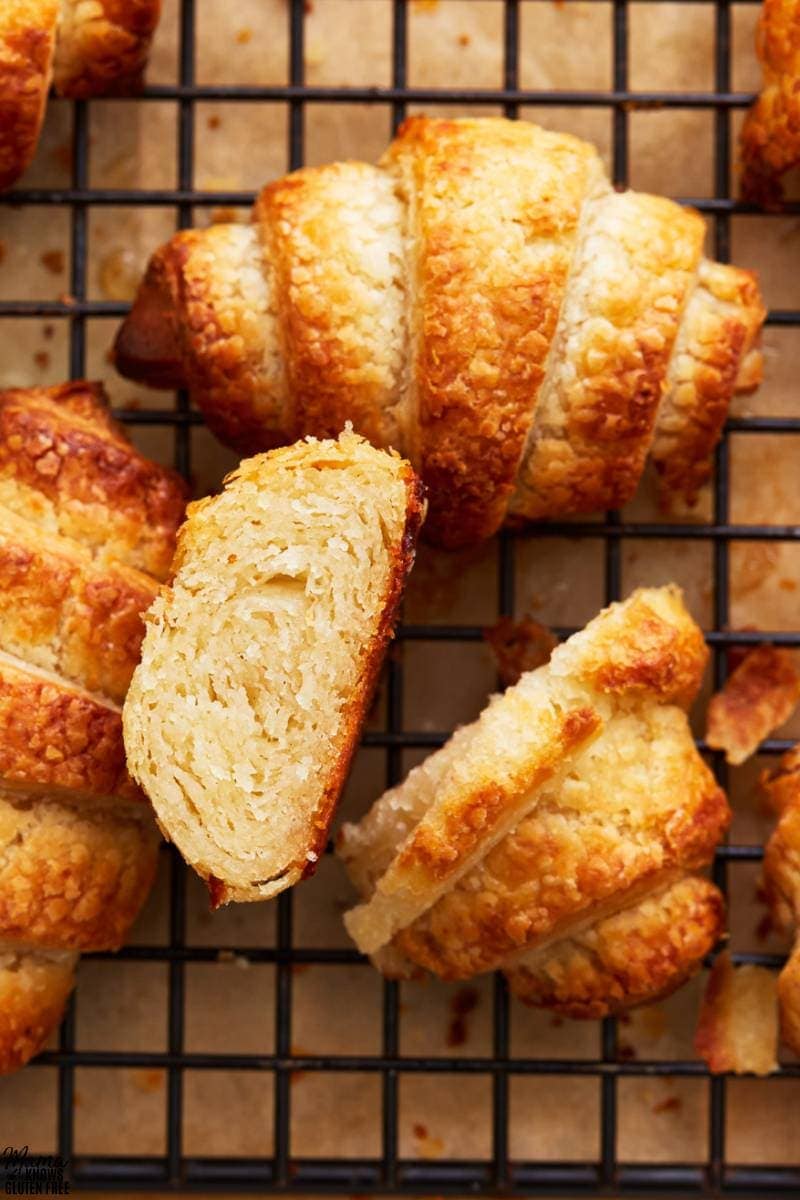
Why Is It Necessary to Refrigerate the Dough Multiple Times?
One of the keys to croissant mastery is to keep the dough cold. The refrigeration step helps to keep the butter solid, which is essential for creating the beautiful flaky layers in the gluten-free croissants.
Can I Add Fillings?
You can add fillings like chocolate, almond paste, or fruit preserves before rolling the dough triangles. Be careful not to overload the dough so it can still bake up nicely.
Storage Instructions
Store leftover gluten-free croissants in an airtight container at room temperature for up to 2 days, or freeze them for up to a month.
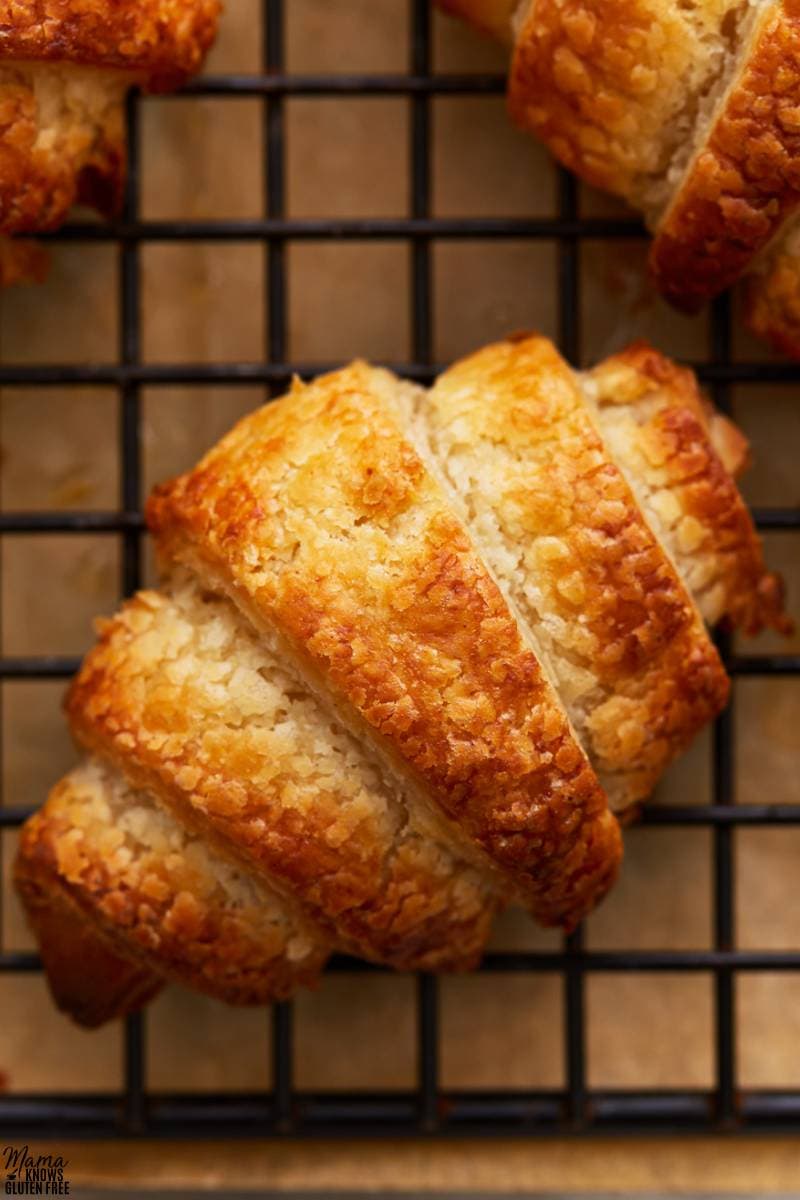
More Gluten-Free Pastries to Try!
Gluten-Free Croissants

Ingredients
- 1 cup unsalted butter, cold
- 2½ cups gluten-free all-purpose flour with xanthan gum, Use a brand that is recommended for yeast baking. See the recipe card notes.
- 2 tablespoons granulated sugar
- 1 teaspoon salt
- 2 teaspoons instant yeast
- ⅓ cup water, cold
- ⅓ cup milk, cold
Egg Wash
- 1 large egg
- 1 tablespoon water
Instructions
- Prepare the butter slab. Pound the butter between sheets of parchment paper into a 7×8-inch slab. Chill in the refrigerator for at least 1 hour, or overnight.
- In a mixing bowl, combine the gluten-free flour, sugar, salt, yeast, water, and milk. Mix on low speed or by hand for 5 to 6 minutes until the dough is soft and smooth. Cover tightly and chill the dough for 1 hour in the refrigerator.
- Roll the chilled dough into an 8×14-inch rectangle. Place the butter slab on one half of the dough. Fold the other half over the butter and seal the edges. Chill for 1 hour.
- Roll the dough to an 8-inch wide rectangle that's 1/4- to 1/2-inch thick. Fold the dough towards the center from both ends and then fold it again along the middle, resembling the way a book closes. This technique creates four layers with each fold or turn. Chill for 1 hour.
- Again, roll out the dough to an 8-inch wide rectangle that's 1/4- to 1/2-inch thick. Fold the dough in three sections, similar to how a letter is folded before being placed in an envelope. This creates a simple, three-layered structure in the dough. Chill for 1 hour.
- Roll the dough to a 1/4-inch thick rectangle measuring about 16 inches in length and 11 inches in width. Place in the freezer for 30 minutes.
- Trim the edges for a neat rectangle and cut the dough into 10 triangles, about 3×10-inches each.
- Cut a small slit at the base of each triangle and roll them up starting from the slit end.
- Preheat the oven to 430°F.
- Combine the egg and water in a bowl mix and whisk to combine. Place the shaped croissants on a baking sheet and brush with the egg wash.
- Bake the gluten-free croissants for 5 minutes, then reduce the temperature to 400°F. Continue baking for 13 to 15 minutes or until they are golden brown. Let cool before serving.
Notes
- It’s important to handle the dough gently. Overworking it can cause the butter to become fully incorporated, rather than remaining in distinct layers, which is key to a croissant’s signature flaky texture. Handle the dough as quickly and efficiently as possible.
- Keep the butter and dough cold throughout the prep process. It’s essential to chill the dough and butter between each step of rolling and folding. This prevents the butter from softening and melting into the dough.
- If possible, work on a cool surface. Marble or granite countertops are ideal!
- If at any point the dough feels too soft or the butter starts to ooze, stop and chill the dough before continuing.
- To store: Store the gluten-free croissants in an airtight container at room temperature for up to 2 days.
- To freeze: The gluten-free croissants can be frozen for up to 1 month.
- Mama says, “Make sure to always check your labels!”
Nutrition
Nutrition information is automatically calculated, so should only be used as an approximation.
How To Make Gluten-Free Croissants Step-by-Step
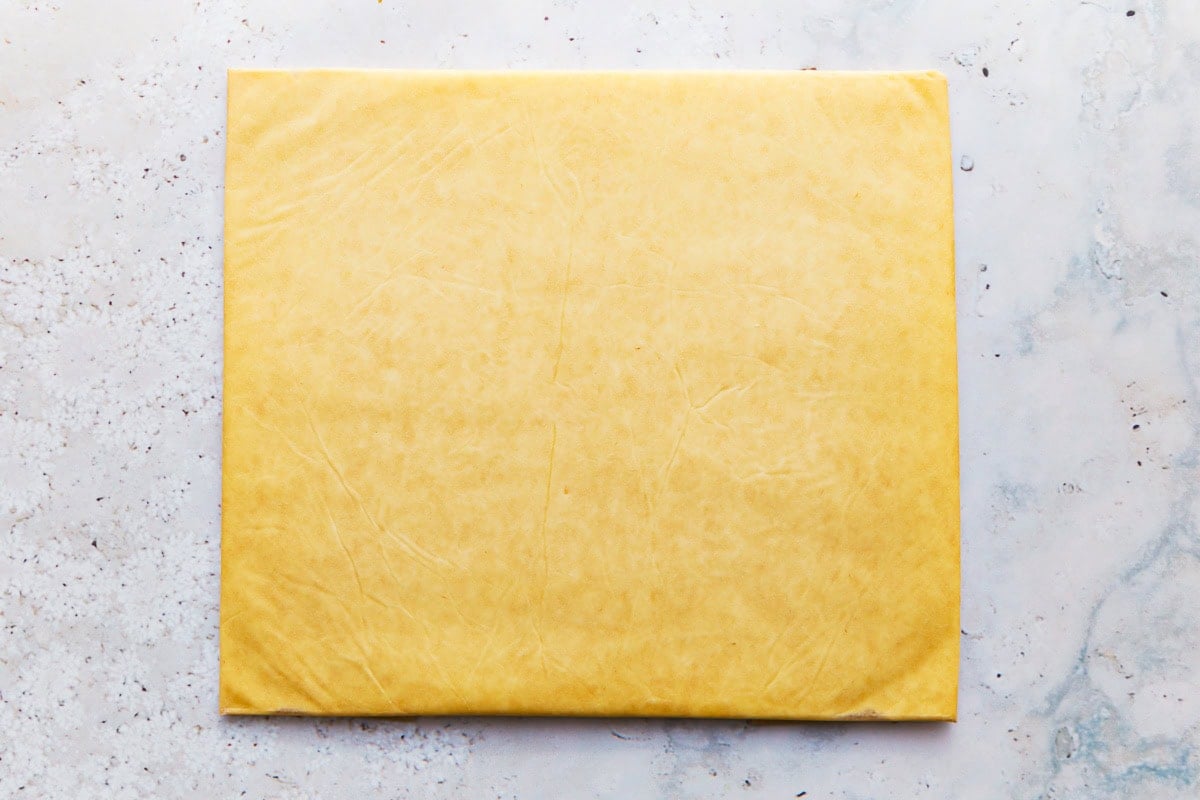
Prepare the butter slab. Pound 1 cup of cold unsalted butter between sheets of parchment paper into a 7×8-inch slab. Chill in the refrigerator for at least 1 hour, or overnight.
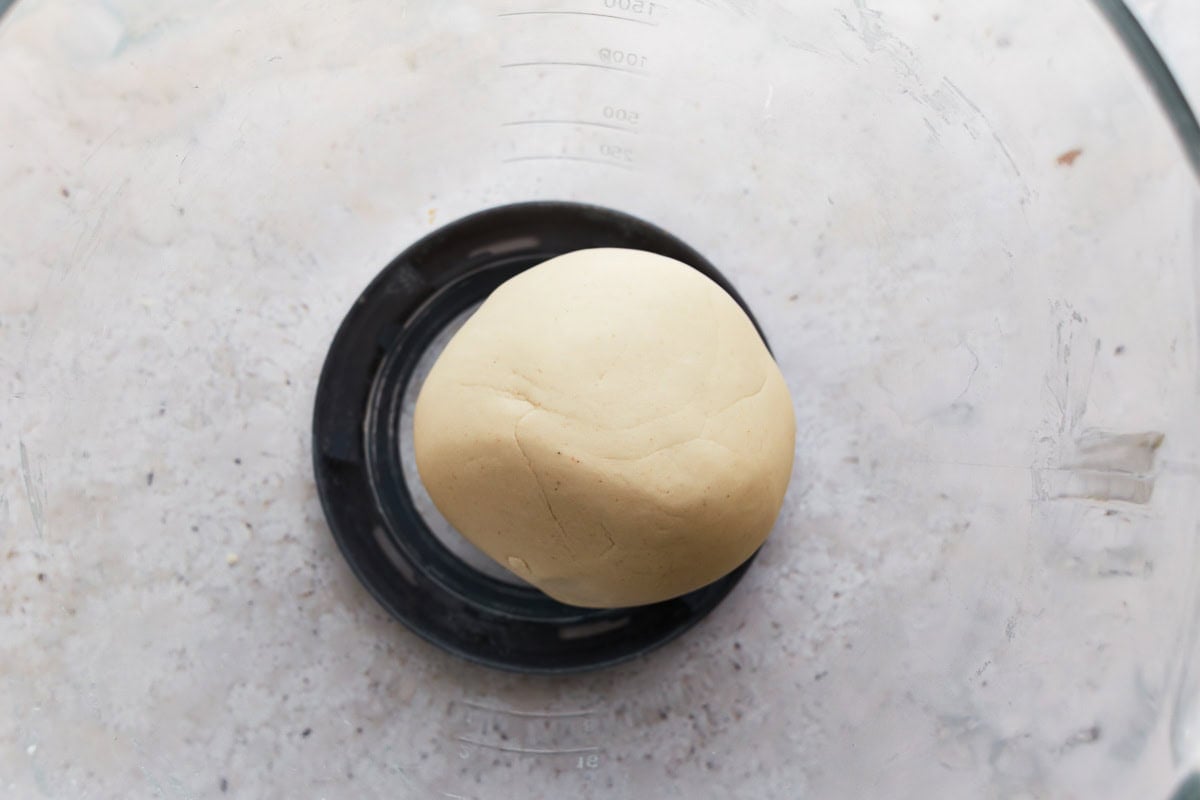
In a mixing bowl, combine 2½ cups of gluten-free flour, 2 tablespoons of granulated sugar, 1 teaspoon of salt, 2 teaspoons of instant yeast, ⅓ cup of cold water, and ⅓ cup of cold milk. Mix on low speed or by hand for 5 to 6 minutes until the dough is soft and smooth. Cover tightly and chill the dough for 1 hour in the refrigerator.
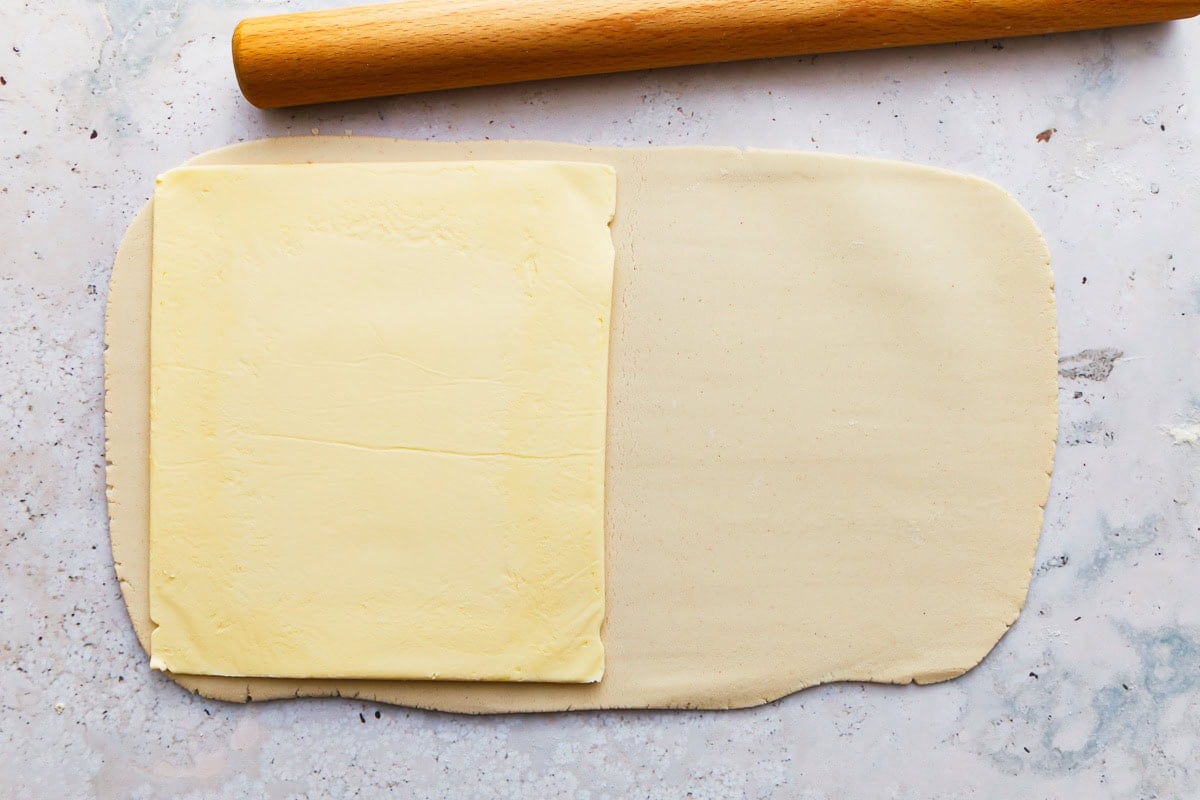
Roll the chilled dough into an 8×14-inch rectangle. Place the butter slab on one half of the dough. Fold the other half over the butter and seal the edges. Chill for 1 hour.
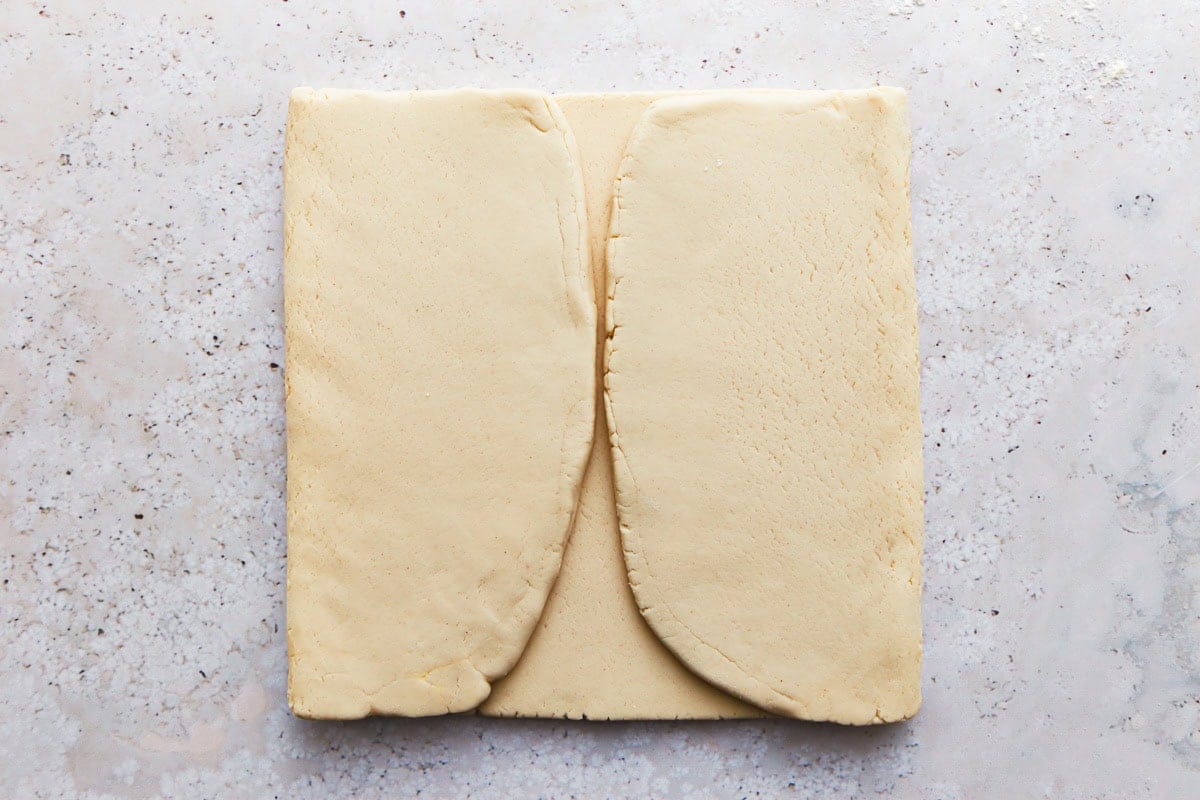
Roll the dough to an 8-inch wide rectangle that’s 1/4- to 1/2-inch thick. Fold the dough towards the center from both ends and then fold it again along the middle, resembling the way a book closes. This technique creates four layers with each fold or turn. Chill for 1 hour.
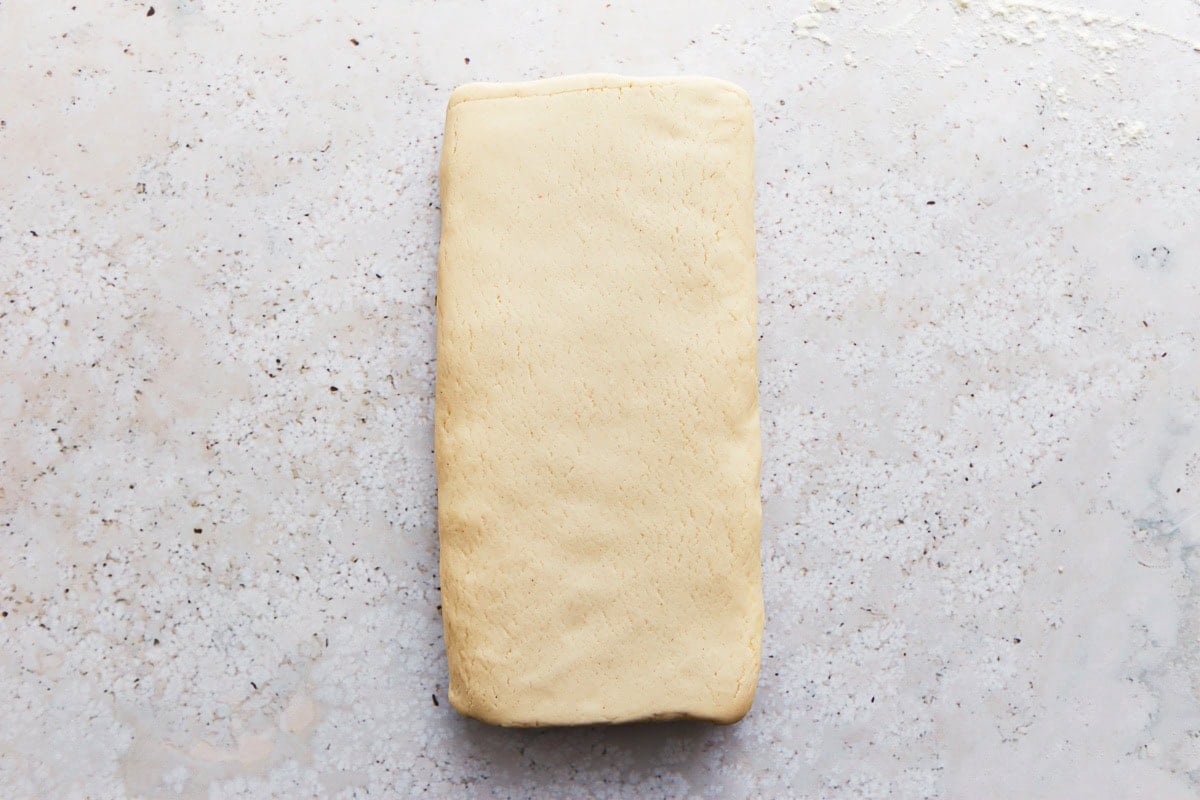
Again, roll out the dough to an 8-inch wide rectangle that’s 1/4- to 1/2-inch thick. Fold the dough in three sections, similar to how a letter is folded before being placed in an envelope. This creates a simple, three-layered structure in the dough. Chill for 1 hour.
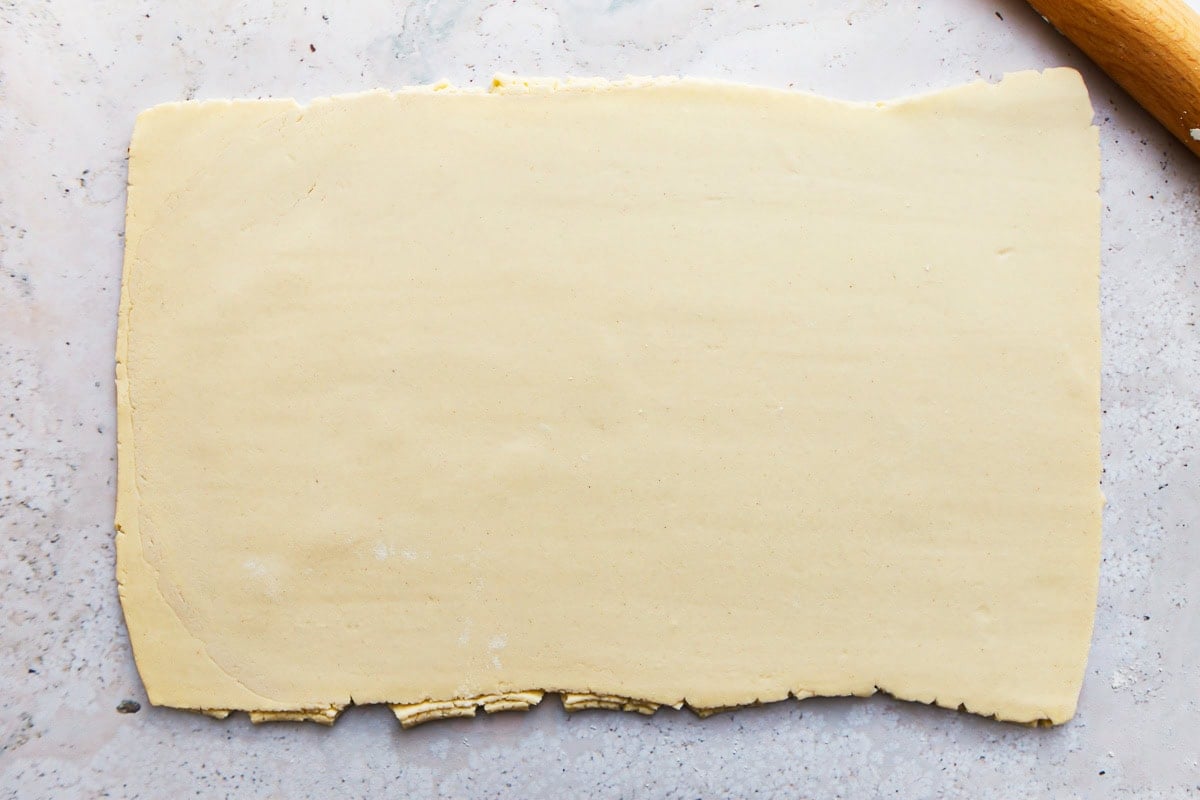
Roll the dough to a 1/4-inch thick rectangle measuring about 16 inches in length and 11 inches in width. Place in the freezer for 30 minutes.
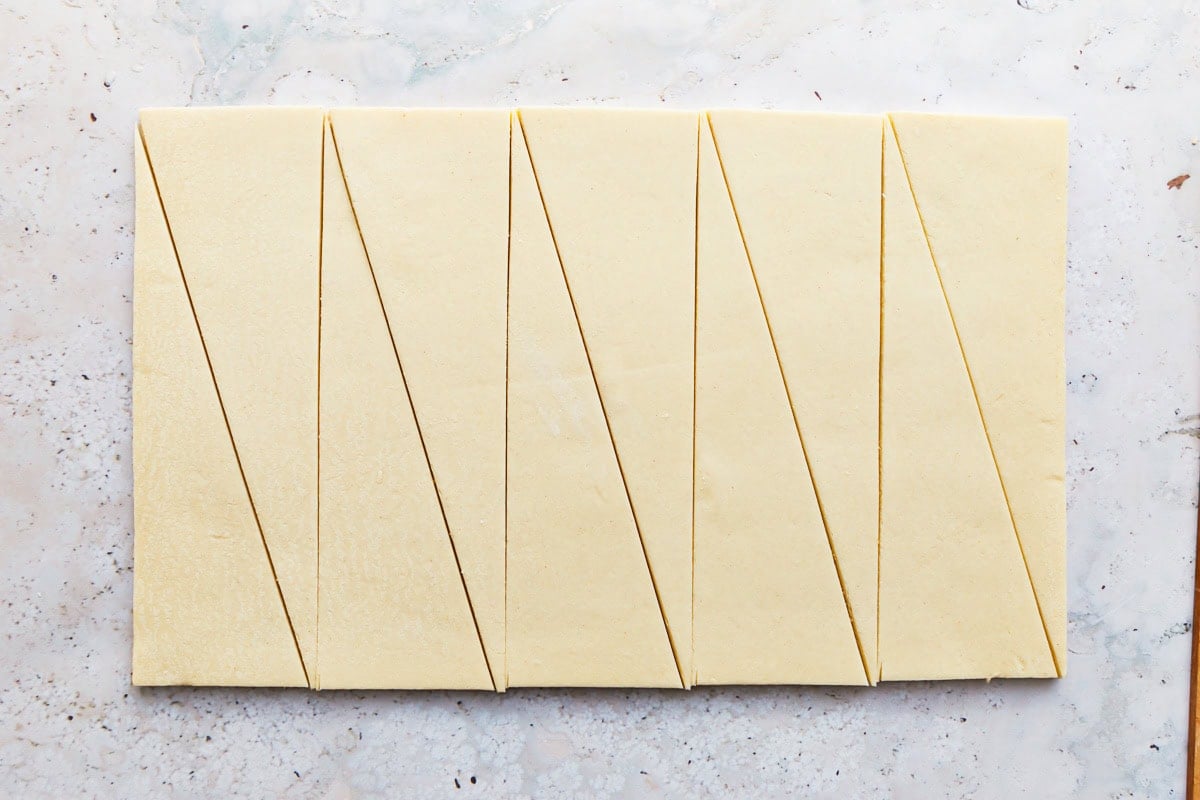
Trim the edges for a neat rectangle and cut the dough into 10 triangles, about 3×10-inches each.
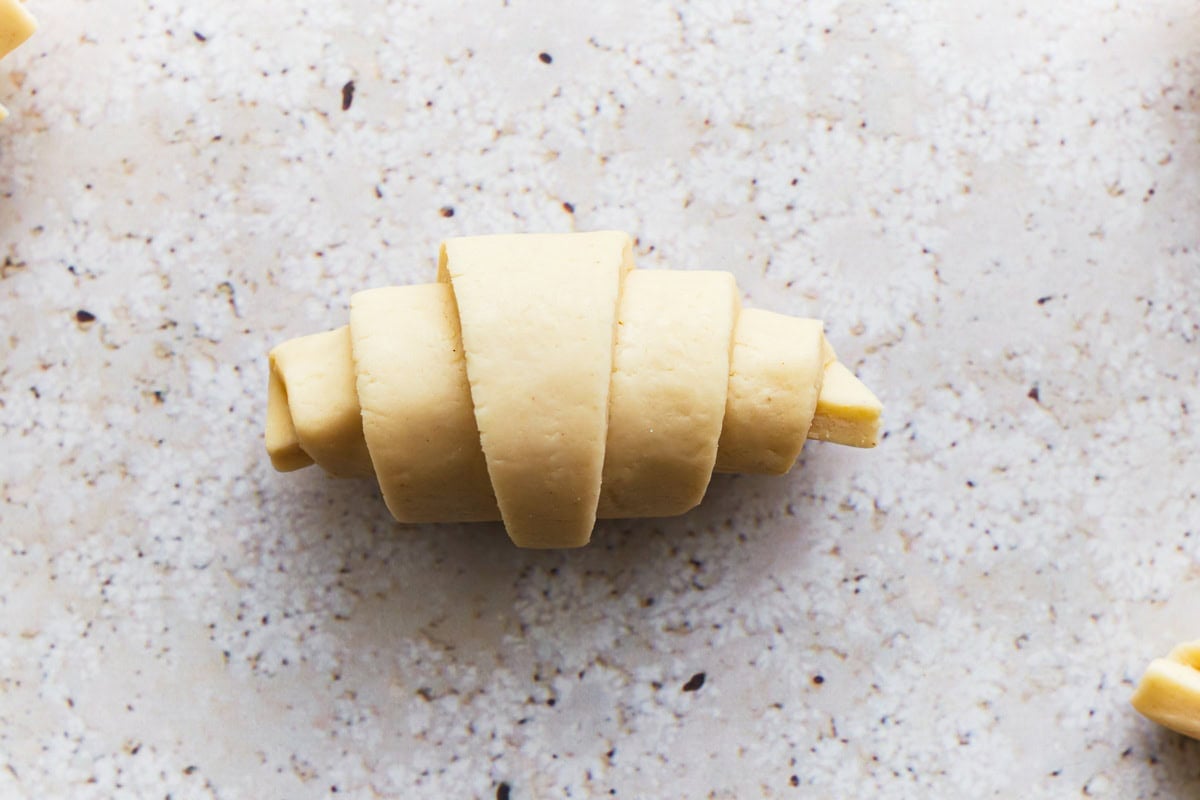
Cut a small slit at the base of each triangle and roll them up starting from the slit end. Preheat the oven to 430°F.
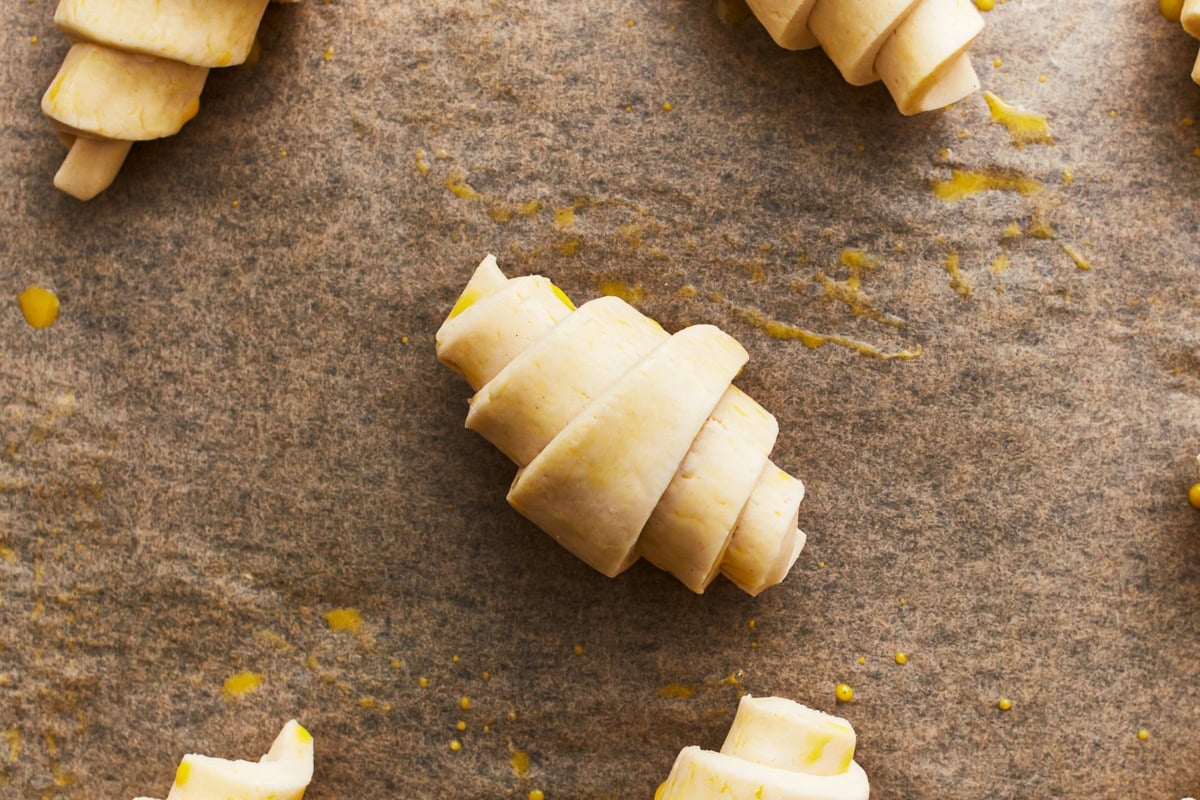
Combine the egg and water in a bowl mix and whisk to combine. Place the shaped croissants on a baking sheet and brush with the egg wash. Bake the croissants for 5 minutes, then reduce the temperature to 400°F. Continue baking for 13 to 15 minutes or until they are golden brown. Let cool before serving.

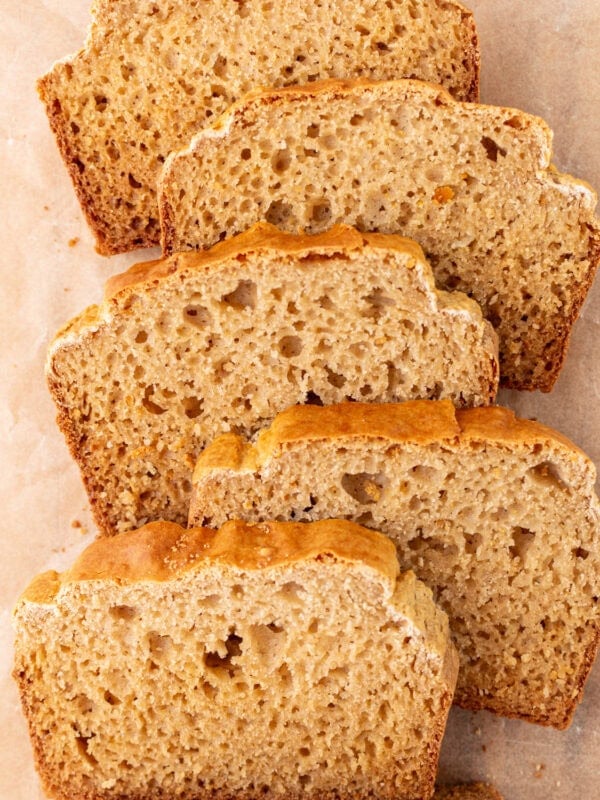
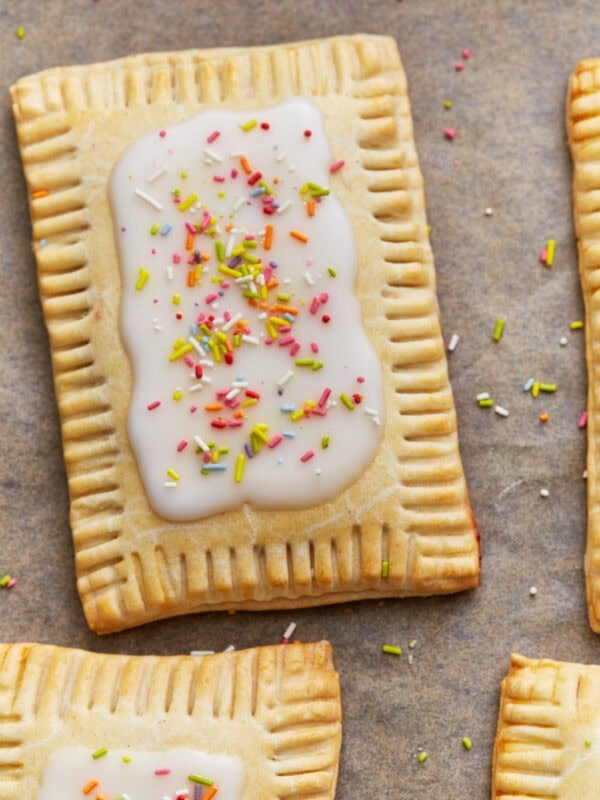
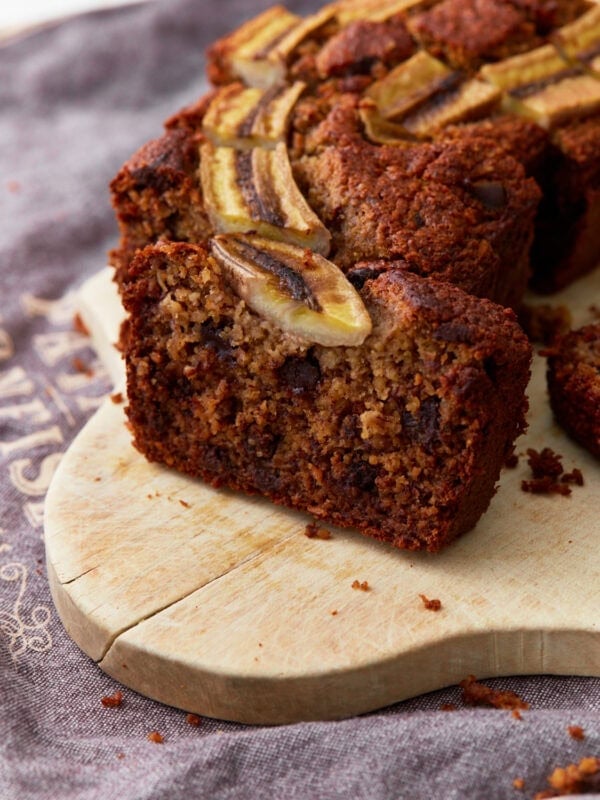
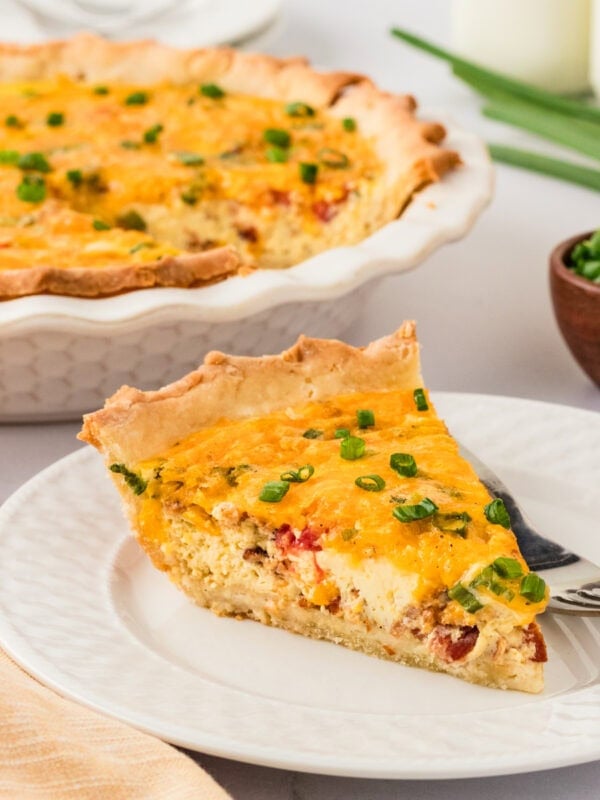






Wow, these were just awful. Such a disappointing waste of time and money. I agree with previous comments. I was not able to work with the dough without it cracking. The result was hard and crunchy on the outside and dense and doughy in the middle, certainly not like a croissant.
Agree with some of the other comments. These didn’t really work. The dough felt dry and kept cracking. After freezing there was not way to roll them without it cracking the entire time. Pretty disappointing since I followed the recipe to a tee.
Hi Sara, what brand of GF flour did you use? Different brands will ultimately require different levels of hydration to achieve the same results.
question on freezing. would I freeze and then bake directly from the freezer or bake first then freeze in your opinion?
Hi Brandie, we recommend freezing, then baking directly from frozen!
Well… these came out nowhere near like the photo and I followed the directions to the letter. Wish I could share a photo of what they really look like.
Hi Meredeth, we’re sorry to hear these didn’t turn out. What brand of flour did you use? Using a GF flour that is not recommended for yeast baking is the number one reason this recipe may not turn out.
I have a lot of experience baking, but this recipe did not work for me. I used the Pillsbury GF flour with xanthan gum as recommended and followed the recipe exactly, but there were problems right away. There was not enough liquid in the dough to make it come together. It was grainy and I had to add significantly more liquid. But even though I carefully added it little by little, by the time the dough did come together, it was a weird consistency. Nevertheless, I persisted. I did the rolling and folding, even though the dough was sticky and mushy and did not stay in place, and followed all the steps before placing in the oven. The dough did not rise, it simply cracked apart in places. Although the results didn’t totally fall apart, they also didn’t look like croissants. By the time they were golden brown on top, they were also too dark and very crunchy on the bottom. The results were edible, but not that great, and they were definitely not croissants. Disappointing.
Hi J, we’re so sorry to hear this recipe didn’t work out for you! It does sound like too much liquid was added to the dough before it had a chance to rest and come together in the fridge. This would lead to that mushiness you’re describing and the disappointing look. Gluten-free flour takes a bit longer to hydrate than traditional wheat flour, so it needs that rest time in the fridge, not necessarily more liquid, to come together.
WOW! These are beautiful. I want to make them for my grandson. Is there something else I can use to brush on the croissants? He is also allergic to eggs. I know you can brush some bread with milk or cream. Do you think that would work?
Hi Karen! I think milk or cream would be a good substitute for the egg wash.
Yay! Excited to try this. Have you had any luck with dairy free butters?
Hi Hannah! This recipe wasn’t tested with dairy-free alternatives, so I can’t guarantee how it would turn out, but I think it’s definitely worth a try. I would suggest using a bit less dairy free butter because it can produce a soggier/oilier end result than dairy butter tends to in croissants.
Oh my wow! This is incredible and I cannot wait to try it out. Do you think using a high quality dairy free butter and dairy free milk will work for this recipe?
Hi Kelly! This recipe wasn’t tested with dairy-free alternatives, so I can’t guarantee how it would turn out, but I think it’s definitely worth a try. I would suggest using a bit less dairy free butter because it can produce a soggier/oilier end result than dairy butter tends to in croissants.
Hi, and thank you for all your recipes!! My daughter has a rice sensitivity so I mix my own flours (but am new to all of this). Are there other flours that I could use with yeast baking? Thank you!
Hi Emily! Brands like Bob’s Red Mill and King Arthur have paleo/grain-free flour blends available. I can’t guarantee how they’d turn out in a recipe like this, but they may be worth a try.